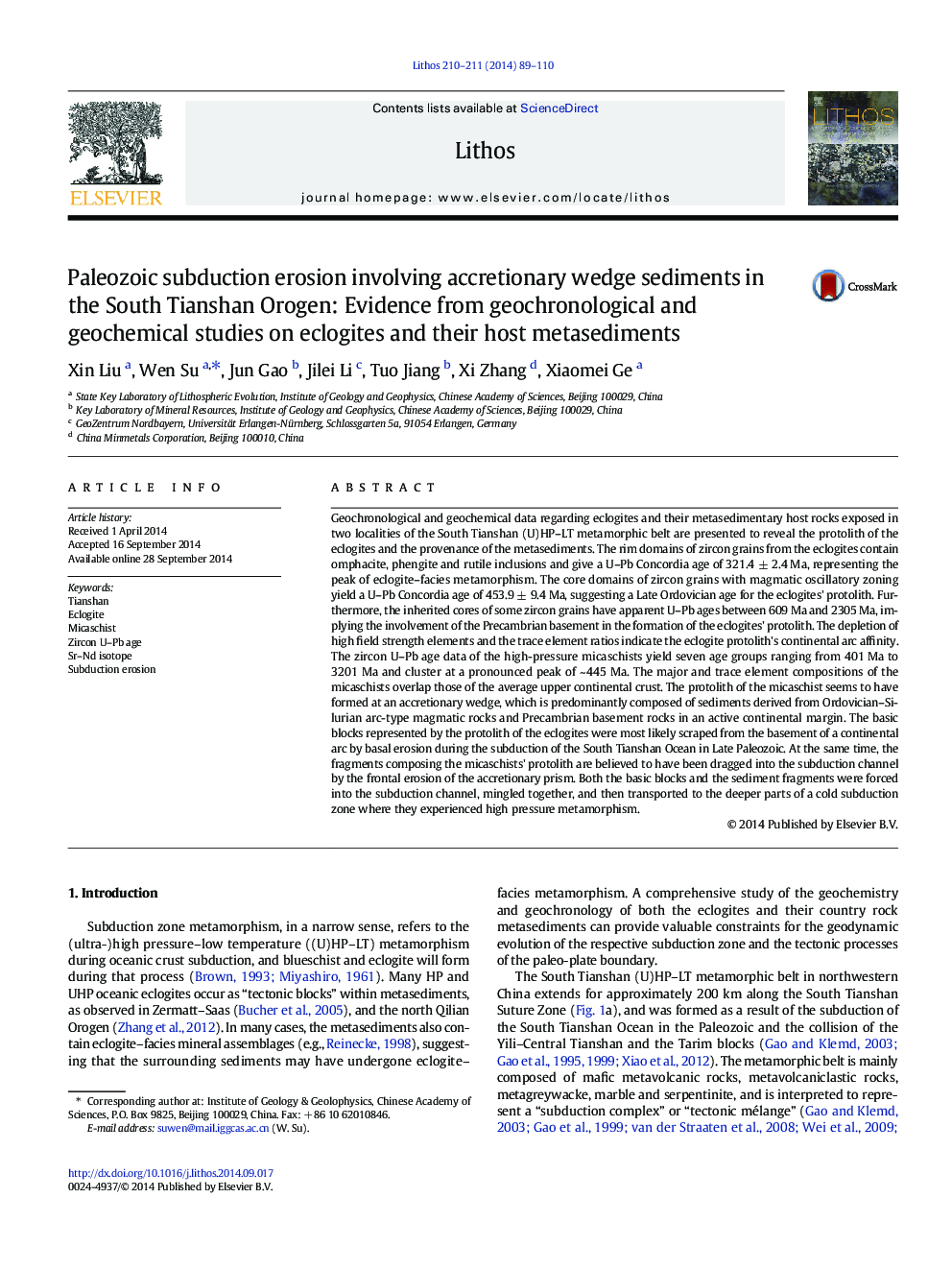| Article ID | Journal | Published Year | Pages | File Type |
|---|---|---|---|---|
| 4715767 | Lithos | 2014 | 22 Pages |
•Protolith of eclogites is Ordovician arc-type magma in an active continental margin.•Fragments that composed the protolith of micaschists deposited in an accretionary prism.•Protolith of eclogites was scraped from the upper continental plate due to basal erosion.•Protolith of micaschists was removed from the accretionary prism because of frontal erosion.
Geochronological and geochemical data regarding eclogites and their metasedimentary host rocks exposed in two localities of the South Tianshan (U)HP–LT metamorphic belt are presented to reveal the protolith of the eclogites and the provenance of the metasediments. The rim domains of zircon grains from the eclogites contain omphacite, phengite and rutile inclusions and give a U–Pb Concordia age of 321.4 ± 2.4 Ma, representing the peak of eclogite–facies metamorphism. The core domains of zircon grains with magmatic oscillatory zoning yield a U–Pb Concordia age of 453.9 ± 9.4 Ma, suggesting a Late Ordovician age for the eclogites' protolith. Furthermore, the inherited cores of some zircon grains have apparent U–Pb ages between 609 Ma and 2305 Ma, implying the involvement of the Precambrian basement in the formation of the eclogites' protolith. The depletion of high field strength elements and the trace element ratios indicate the eclogite protolith's continental arc affinity. The zircon U–Pb age data of the high-pressure micaschists yield seven age groups ranging from 401 Ma to 3201 Ma and cluster at a pronounced peak of ~ 445 Ma. The major and trace element compositions of the micaschists overlap those of the average upper continental crust. The protolith of the micaschist seems to have formed at an accretionary wedge, which is predominantly composed of sediments derived from Ordovician–Silurian arc-type magmatic rocks and Precambrian basement rocks in an active continental margin. The basic blocks represented by the protolith of the eclogites were most likely scraped from the basement of a continental arc by basal erosion during the subduction of the South Tianshan Ocean in Late Paleozoic. At the same time, the fragments composing the micaschists' protolith are believed to have been dragged into the subduction channel by the frontal erosion of the accretionary prism. Both the basic blocks and the sediment fragments were forced into the subduction channel, mingled together, and then transported to the deeper parts of a cold subduction zone where they experienced high pressure metamorphism.
